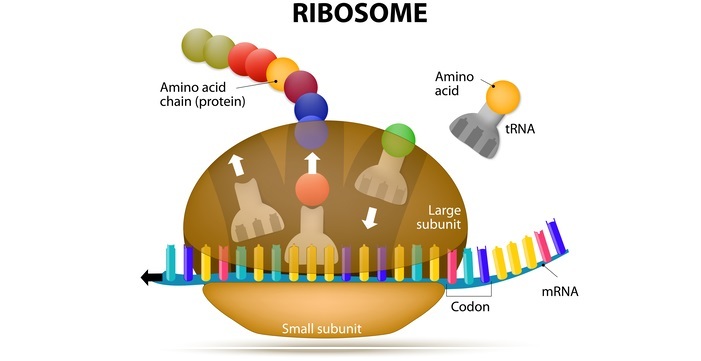
 Data Structure
Data Structure Networking
Networking RDBMS
RDBMS Operating System
Operating System Java
Java MS Excel
MS Excel iOS
iOS HTML
HTML CSS
CSS Android
Android Python
Python C Programming
C Programming C++
C++ C#
C# MongoDB
MongoDB MySQL
MySQL Javascript
Javascript PHP
PHP
- Selected Reading
- UPSC IAS Exams Notes
- Developer's Best Practices
- Questions and Answers
- Effective Resume Writing
- HR Interview Questions
- Computer Glossary
- Who is Who
Ribosomal RNA: Types and Functions
Introduction
Ribosomal RNA (rRNA) is a type of RNA that plays a vital role in protein synthesis. It forms the major structural and functional components of ribosomes, the molecular machines that translate mRNA into proteins. Ribosomes are complex macromolecular assemblies composed of ribosomal RNA and various proteins, and they are found in all living cells, from bacteria to humans.

What is Ribosomal RNA?
Ribosomal RNA is a type of RNA that serves as the structural and functional components of ribosomes.
Ribosomes are the site of protein synthesis in cells, where the information encoded in messenger RNA (mRNA) is translated into the amino acid sequence of a protein.
Ribosomal RNA makes up the bulk of the ribosome, providing a scaffold for the various protein components of the ribosome to bind and form the active site for protein synthesis.
Where Is It Made?
Ribosomal RNA is synthesized in the nucleolus of eukaryotic cells, which is a specialized region of the nucleus where ribosomal RNA genes are clustered. The transcription of ribosomal RNA genes is carried out by RNA polymerase I, a specialized enzyme that is distinct from the RNA polymerase that transcribes protein-coding genes.
In bacteria, ribosomal RNA is transcribed by a single RNA polymerase, and the transcription and translation processes occur concurrently since bacteria lack a defined nucleus.

Types of Ribosomal RNA
There are three types of ribosomal RNA: 5S, 16S, and 23S, each with a distinct role in protein synthesis.
The 5S rRNA is found only in the large subunit of eukaryotic ribosomes, while the 16S and 23S rRNAs are found in both the small and large subunits of prokaryotic ribosomes and in the small and large subunits of eukaryotic ribosomes.
The 16S rRNA is involved in the decoding of mRNA during translation. It recognizes the start codon and initiates protein synthesis, and it also binds to the aminoacyl-tRNA complex that carries the next amino acid to be added to the growing polypeptide chain. The 16S rRNA is highly conserved across all domains of life, making it a useful tool for reconstructing evolutionary relationships among organisms.
The 23S rRNA is responsible for the peptidyl transferase activity of the ribosome, which catalyzes the formation of peptide bonds between adjacent amino acids in the growing polypeptide chain. It also plays a role in ribosome translocation, the movement of the ribosome along the mRNA template during protein synthesis. The 23S rRNA is the largest component of the ribosome, accounting for about two-thirds of its mass.
The 5S rRNA is involved in the assembly of the ribosome and in stabilizing its structure. It also plays a role in regulating the rate of protein synthesis by interacting with the ribosomal proteins and other regulatory factors.
Functions of Different Types of Ribosomal RNA
The three types of ribosomal RNA have different roles in protein synthesis, and their specific functions can be illustrated by examples.
-
The 16S rRNA is crucial for the recognition of the start codon and the initiation of protein synthesis.
For example, in bacteria, the Shine-Dalgarno sequence in the mRNA binds to a complementary sequence in the 16S rRNA, positioning the ribosome at the correct site to start translation.
In eukaryotes, the 16S rRNA recognizes the 5' cap structure of the mRNA and initiates protein synthesis at the first AUG codon.
-
The 23S rRNA is responsible for the peptidyl transferase activity of the ribosome, which catalyzes the formation of peptide bonds between adjacent amino acids in the growing polypeptide chain. It also plays a crucial role in ribosome translocation, the movement of the ribosome along the mRNA template during protein synthesis.
One example of the function of the 23S rRNA is seen in the antibiotic erythromycin, which binds to a specific site on the 23S rRNA in bacteria, inhibiting protein synthesis and causing cell death.
Another example is the formation of the ribosome exit tunnel, which is created by the 23S rRNA and helps guide the nascent polypeptide chain out of the ribosome during protein synthesis.
-
The 5S rRNA plays a role in the assembly of the ribosome and in stabilizing its structure. It also interacts with other regulatory factors to modulate the rate of protein synthesis.
For example, in eukaryotes, the 5S rRNA forms a complex with a group of proteins called the pentatricopeptide repeat (PPR) proteins, which bind to specific mRNAs and regulate their translation.
Another example of the function of the 5S rRNA is seen in the regulation of the nucleolar stress response, which is triggered by cellular stressors such as DNA damage or viral infection.
In response to these stressors, the 5S rRNA can be released from the ribosome and bind to a specific protein called MDM2, preventing it from inhibiting the tumor suppressor protein p53 and allowing it to induce cell cycle arrest or apoptosis.
Conclusion
In conclusion, ribosomal RNA plays a crucial role in protein synthesis, serving as the structural and functional components of ribosomes.
There are three types of ribosomal RNA, each with a distinct role in protein synthesis: the 16S rRNA, which is involved in the initiation of protein synthesis; the 23S rRNA, which is responsible for the peptidyl transferase activity and ribosome translocation; and the 5S rRNA, which is involved in ribosome assembly and stabilization, as well as regulating the rate of protein synthesis.
The functions of ribosomal RNA can be illustrated by examples such as the recognition of start codons, antibiotic targeting, and regulatory interactions with other factors. Overall, ribosomal RNA is essential for life, and its study provides insight into the mechanisms of protein synthesis and the evolution of life on Earth.

